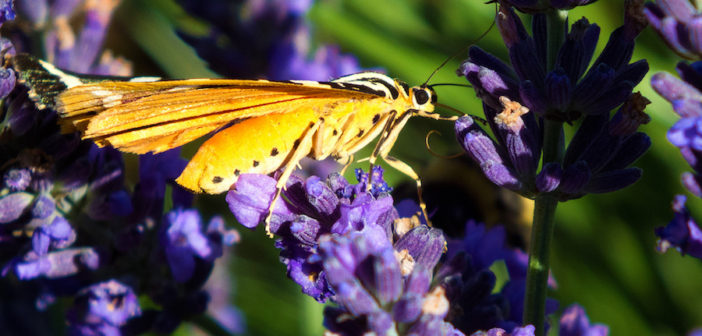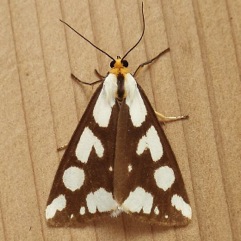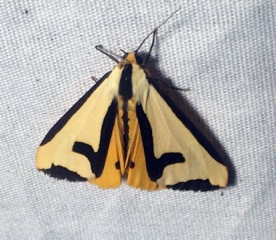The colorful, boldly patterned tiger moths are in the spotlight this year for the Sixth Annual National Moth Week taking place around the world July 22 through 30.
Novice and veteran “moth-ers” are invited to participate wherever they are in this worldwide citizen science project that shines a spotlight on moths, their beauty, ecological diversity and critical role in the natural world. Online registration is in full swing with events already registered in 15 countries and 27 U.S. states as of the end of May.
Since National Moth Week (NMW) was established in 2012, thousands of public and private events attracting people of all ages have been held around the world in nearly 80 countries and all 50 states.
Though often maligned as butterflies’ unattractive cousins and nighttime nuisances, moths have always had loyal fans among entomologists and naturalists for their beauty and value as pollinators and a food source for other animals. Today, moths also are being observed for the impact of climate change on their numbers and distribution.
“National Moth Week offers the general population the opportunity to become citizen scientists by observing and documenting moths in their own backyards and local environments,” said NMW co-founder Dr. David Moskowitz.
Anyone can register a public or private event or locate one to attend in their area by checking nationalmothweek.org for public events. Registration is free to individuals, groups and organizations. Last year, more than 400 events were registered in the U.S. and nearly 40 other countries.
- Haploa confusa. Credit Carl Barrentine.
- Grammia virgo. Credit Carl Barrentine.
- Grammia virguncula. Credit Carl Barrentine.
- Clymene Tiger moth. Credit Sandra Lanman, NJ.
Each year, National Moth Week features a different group of related moths to highlight the diversity and distribution of moths. This year, tiger moths are spotlighted, drawing attention to their often bold, geometric patterns and colors.
Found throughout the world, with the majority of species in tropical areas, tiger moths are part of the Arctiinae subfamily, which has about 11,000 species all together. Tiger moths are among the most distinctive Arctiinae. They can also be identified by their hairy caterpillars known as “woolly bears.” In American folklore, the amount of black on the caterpillars’ backs is thought to predict the severity of the coming winter.
The bold patterns and colors on many tiger moths serve as warnings to predators and, in many cases, their bodily fluids can be poisonous to birds or bats that try to consume them. For humans, however, they are harmless and interesting to observe and photograph.
Studying moths can be as easy as turning on a porch light and waiting for them to come, or shining a light on a white sheet in a backyard or park. Ambitious moth-ers also coat tree trunks with a sticky, sweet mixture of fruit and stale beer. Searching for caterpillars and day-flying moths is a good activity for daytime. The NMW website offers tips on attracting moths. So long as you don’t pick up the moths, and make sure they all fly away after your event, NMW activities should not be harmful to the insects.
“The techniques are the same, whether they are done by a professional entomologist or novice citizen scientist,” said NMW co-founder Liti Haramaty.
Participants are invited to contribute their photos and findings to NMW partner websites, as well as the NMW Flickr group, which now has 73,000 moth photos from around the world.
National Moth Week was founded in 2012 by the Friends of the East Brunswick (N.J.) Environmental Commission, a nonprofit organization dedicated to environmental education and conservation. It is now one of the most widespread citizen science projects in the world. It is coordinated by an all-volunteer team in New Jersey, New York, Ecuador and Belize. For the past four years, public and private mothing events have been held annually in all 50 states and a total of 65 different countries. The NMW website features an events map showing the locations of events around the world.
For more information about National Moth Week, visit the website at nationalmothweek.org, or write to info@nationalmothweek.org.
Featured image: Jersey Tiger moth in Holbeton, England. Credit Steve Herring, CC BY-ND 2.0









